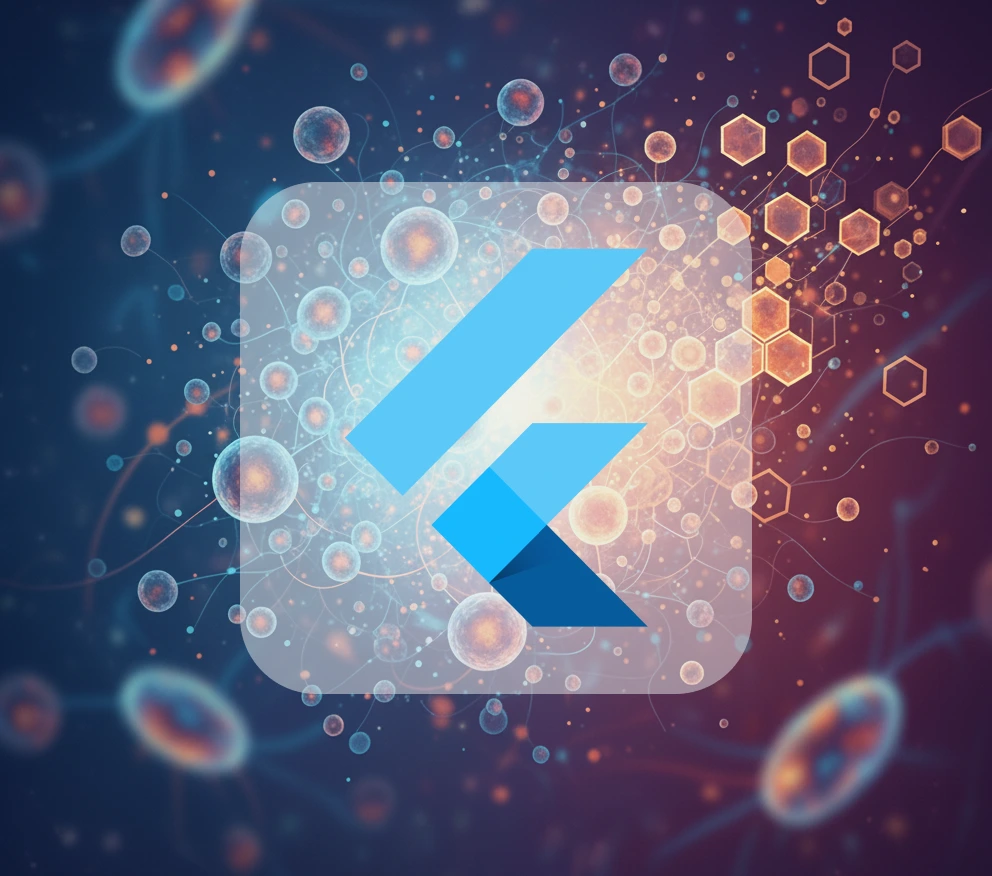An Introduction to Persistent Mutable BLoC State

In the world of Flutter development, the BLoC (Business Logic Component) pattern is a popular choice for managing state. Its core principle is to separate presentation from business logic, which makes your code faster, easier to test, and more reusable. With a simple setup and a strong community ecosystem, BLoC is a very powerful tool.
However, it's not without its challenges. One of the primary catches with the standard BLoC implementation is how it handles widget tree updates. Often, a small change in state can trigger a rebuild of a large portion of the widget tree, which can be inefficient.
This is where a different approach can make a significant impact. Let's explore a method for creating more selective and efficient widget updates in your BLoC applications.
The Live Cells
Library
To tackle the challenge of inefficient tree updates, we can use a reactive programming library called Live Cells.
Live Cells is a reactive library that enables a two-way data flow directly within the widget tree. You can think of a cell
as an observable value holder. When the value inside a cell changes, only the specific widgets observing that cell are rebuilt.
Here’s a brief look at how it works:
Define a cell: A cell is a (mutable) variable that holds your state. It can be any type of data, such as an integer, string, or even a complex object.
// Define a mutable cell holding an integer
final count = MutableCell(0);
// Define a mutable cell holding a string
final content = MutableCell('');Define an observer: You can watch a cell for changes and trigger actions. When the cell's value is updated, the observer automatically runs.
// This observer will run whenever the value of 'count' changes
ValueCell.watch(() {
print('${count()}');
});Update a cell's value: You can change the value of a cell, which will in turn trigger any observers.
// Increment the cell's value, which calls the observer
count.value++;Bind to Widgets: Use special widgets like CellWidget.builder or LiveTextField to bind UI components directly to cells. This ensures that only these specific widgets redraw when the cell's value changes.
Column(
children: [
// LiveTextField is directly bound to the 'content' cell
LiveTextField(
content: content
),
// This CellWidget will only rebuild when 'content' changes
CellWidget.builder(() =>
Text('You wrote: ${content()}')
)
]
)The Main Idea: Per-Mutable BLoC States
So, how does this connect back to BLoC? The core idea is to change our BLoC states to use MutableCells as state variables.
Instead of having a state class with plain, immutable properties, we define a state where the properties themselves are MutableCell objects.
Consider this CellsDone state class:
// The state class itself
class CellsDone extends CellsState {
// Instead of a final MyImmutableClass, we have a final MutableCell
// that HOLDS a MyImmutableClass.
final MutableCell<MyImmutableClass> imConstantlyChanging;
// ... other state code
}
// The data class that the cell holds
class MyImmutableClass {
final String name;
final String ietsAnders;
MyImmutableClass({
required this.name,
required this.ietsAnders,
});
}By doing this, the BLoC state object itself (CellsDone) remains the same. We are not emitting new states from the BLoC. Instead, we are changing the inner value of the MutableCell that the state holds. This allows us to get more efficient tree updates and write less state-handling code.
The Difference in Practice: A Code Comparison
Let's compare the traditional BLoC approach with the per-mutable cell approach to see the benefits.
Without Cells: The Standard BLoC Approach
In a typical BlocBuilder, any change to the state forces the entire builder to run again.
// Standard BlocBuilder setup
BlocBuilder<CellsCubit, CellsState>(
(context, cellState) {
if (cellState is! CellsDone) {
// Loading indicator / error handling
}
return Column(
children: [
TextField(
label: Text("Name"),
onChanged: (value) =>
// This rebuilds the WHOLE widget tree inside the BlocBuilder
context.read<CellsCubit>.updateName(value),
),
Text(cellState.imConstantlyChanging.name),
TextField(
label: Text("Iets Anders"),
onChanged: (value) =>
// This ALSO rebuilds the whole tree
context.read<CellsCubit>.updateIets(value),
),
Text(cellState.imConstantlyChanging.ietsAnders),
],
);
}
);In this example, typing in either TextField triggers an event, creates a new state, and causes the entire Column to be rebuilt, even the widgets that haven't changed.
With Cells: The Per-Mutable State Approach
By combining BlocBuilder with CellWidget.builder, we can achieve much more granular control.
BlocBuilder<CellsCubit, CellsState>(
(context, cellState) {
if (cellState is! CellsDone) {
// Loading indicator / error handling
}
// CellWidget.builder ensures only its children rebuild on demand
return CellWidget.builder(
(_) => Column(
children: [
// LiveTextField is directly bound to the cell's property
LiveTextField(
content: cellState.imConstantlyChanging.name,
label: Text("Name"),
),
// This Text widget will ONLY update when the 'name' property changes
Text(cellState.imConstantlyChanging.name()),
// LiveTextField bound to the other property
LiveTextField(
content: cellState.imConstantlyChanging.ietsAnders,
label: Text("Iets Anders"),
),
// This Text widget will ONLY update when 'ietsAnders' changes
Text(cellState.imConstantlyChanging.ietsAnders()),
],
)
);
}
);Here, the BlocBuilder is only responsible for high-level state changes (like switching from a loading state to a done state). Once in the CellsDone state, the CellWidget.builder takes over. Now, when you type in the Name
LiveTextField, only the Text widget bound to the name property is rebuilt. The rest of the UI remains untouched, resulting in less time spent on rebuilds and less state management code!